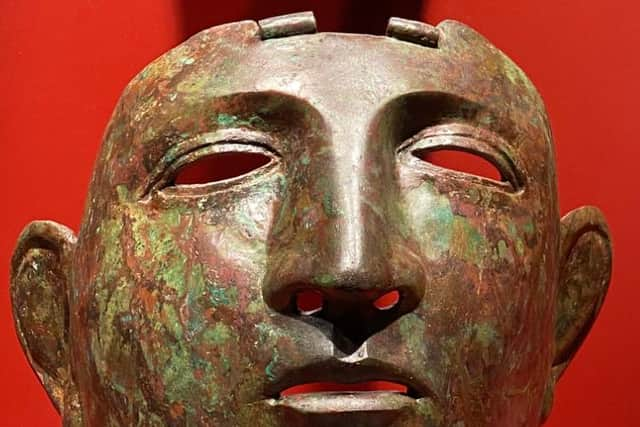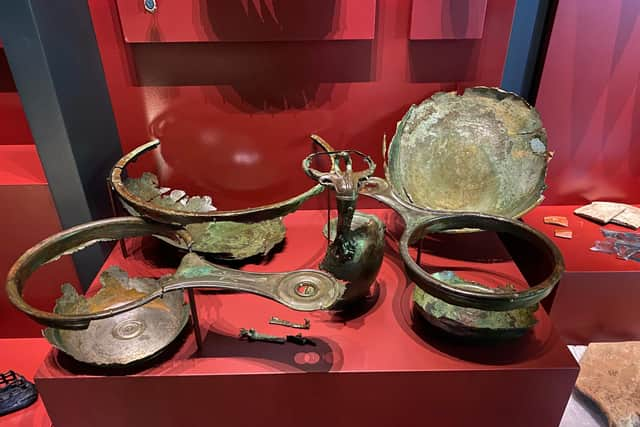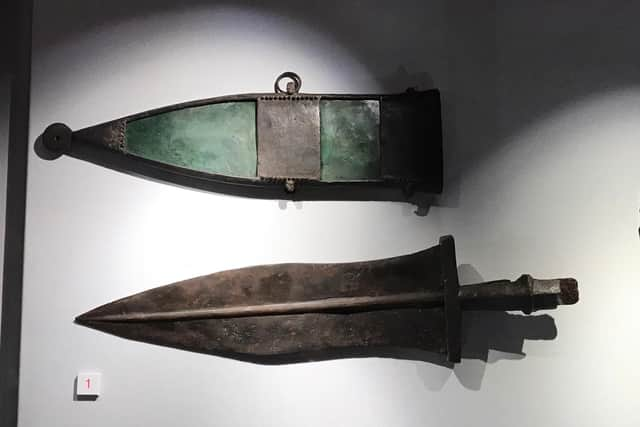Donor shares 'incredible' collection of artefacts with new museum of Roman invasion of Scotland
Parade masks, weapons and tools are among those items donated to the new Trimontium Museum in Melrose.
The museum sits close to the Trimontium at Newstead, the largest Roman fort and settlement north of Hadrian’s Wall that became crucial to the supply chains of the legions who marched into then Caledonia.
Advertisement
Hide AdAdvertisement
Hide AdTrimontium was occupied from around 80AD over a period of around 100 years and abandoned, probably after a great rebellion of local tribes.


The mystery museum donor, who is German and lives partly in Edinburgh, has been a collector of Roman military ware since childhood and has decided to now share the highlights of his collection with the public.
Dr John Reid, chairman of the Trimontium Trust, said: “These are incredible artefacts, they are top-class artefacts. We could never afford to bid for them at a national level.
"They are Roman military objects that are as close to the original condition as possible, which just puts them on a completely different level.”


More than 200 items have also been donated to the Melrose museum on a long-term basis by National Museums Scotland (NMS) in one of the biggest deals of its kind.
Trimontium was first excavated by Melrose solicitor John Curle between 1905 and 1910.
Dr Reid said: “Curle excavated the fort and found an amazing treasure trove of objects. Before the Romans left Trimontium, they expanded the wells and dug a whole lot of new pits – around 100 of them.
"They rammed them full of stuff, everything from pottery to weapons to helmets, as well as bodies and horses.


Advertisement
Hide AdAdvertisement
Hide Ad"All this went to Edinburgh and forms the core of the Iron Age and Roman collection.”
The trust worked with Dr Fraser Hunter, principal curator of prehistoric and Roman archaeology at NMS, to bring a portion of the finds back to the Scottish Borders.
Dr Hunter said: "We congratulate all at Trimontium on achieving this milestone after exceptional hard work by the volunteers there. It has been our pleasure to collaborate with the trust in the conservation, interpretation, and loan of over 200 items from our collection as part of our ongoing national programme.
"Trimontium was one of the key sites in Roman Scotland and its story is one of European significance. This new display tells its tales in exciting new ways, with spectacular finds.”


The fort sits close to the major Iron Age fort at Eildon North Hill, which was covered in hundreds of roundhouses around the time of the Roman invasion.
Dr Reid added: "What makes Trimontium so important is where the Romans put it. It was built right in the clockwork of the native power base.
"There was a fantastic concentration of people in this area and within 50 miles, there were at least 100 Iron Age forts and between them innumerable farms.”
Trimontium was set on fire and destroyed around 180D, with historian Cassius Dio writing of the fort around 184AD that “one of the walls was overrun by barbarian tribes who slaughtered the imperial governor and his troops”.
Advertisement
Hide AdAdvertisement
Hide AdEmperor Septimius Severus then used Trimontium as a camp during his foray into Caledonia in 208AD.
A message from the Editor:Thank you for reading this article. We're more reliant on your support than ever as the shift in consumer habits brought about by Coronavirus impacts our advertisers.
If you haven't already, please consider supporting our trusted, fact-checked journalism by taking out a digital subscription.
Comments
Want to join the conversation? Please or to comment on this article.
